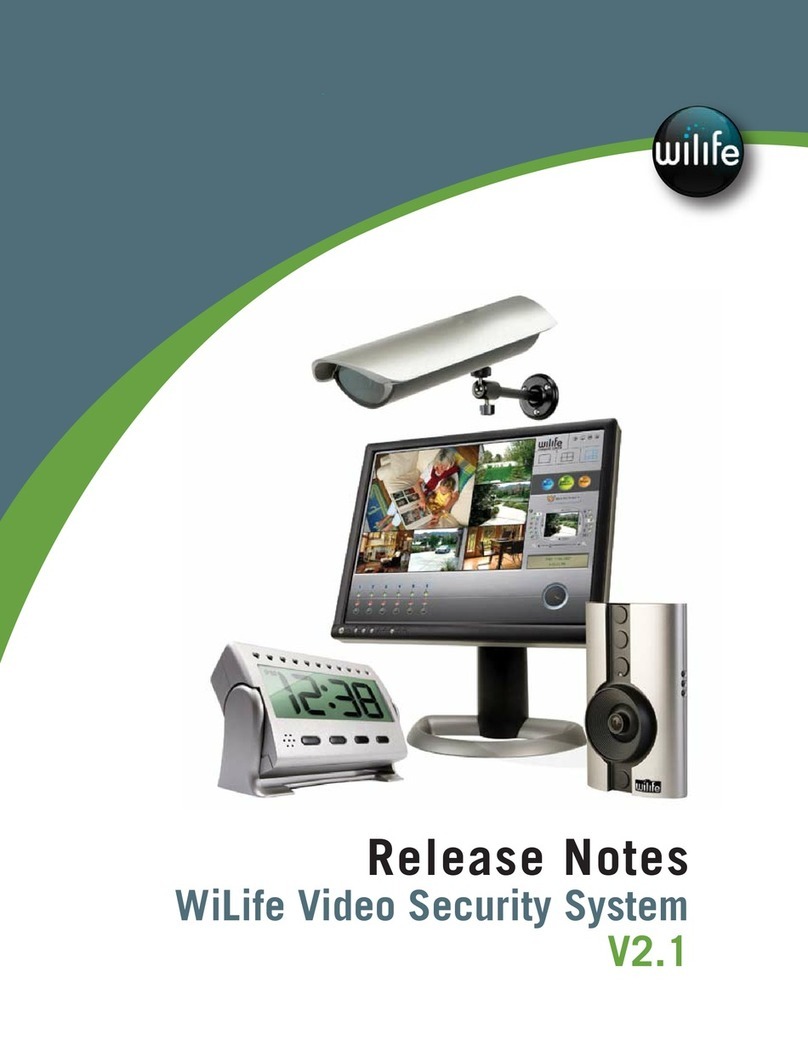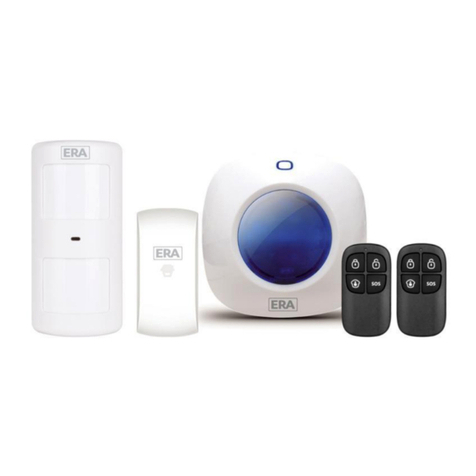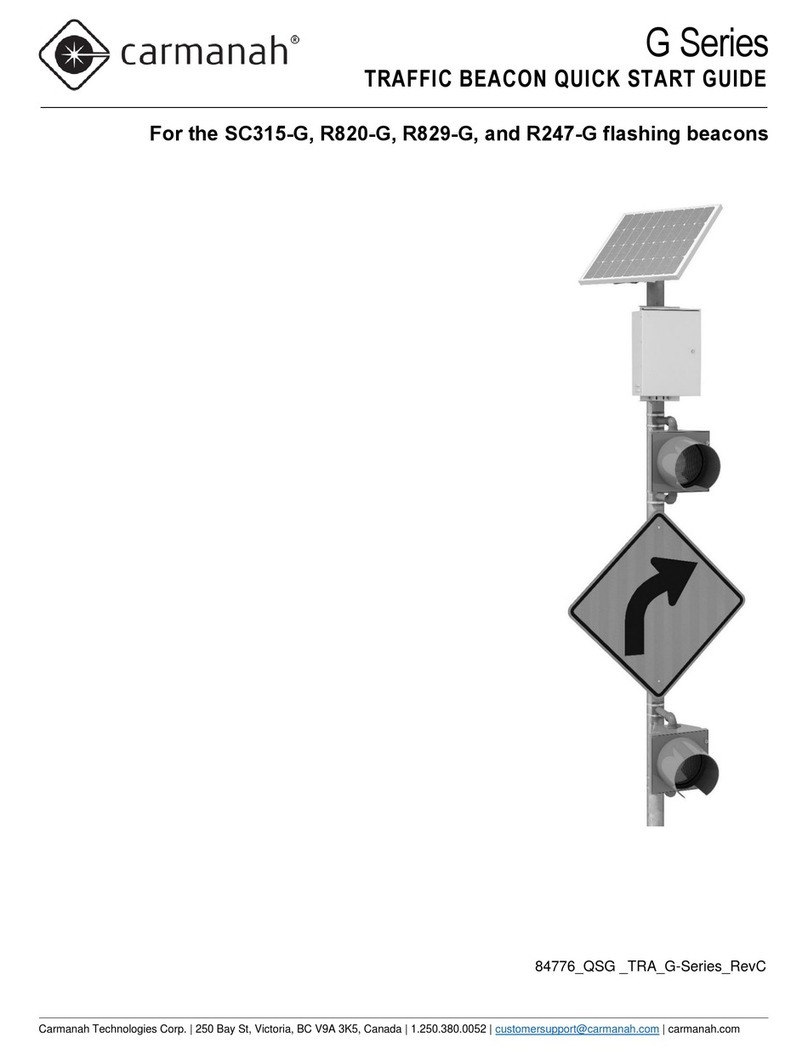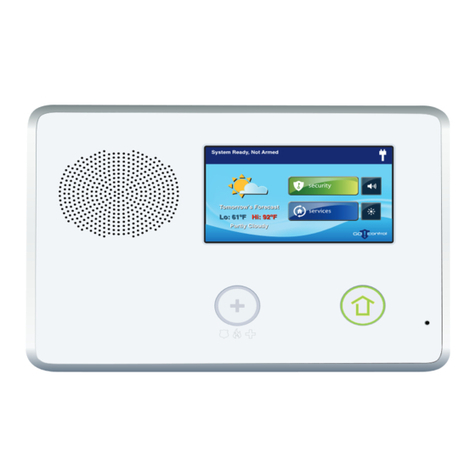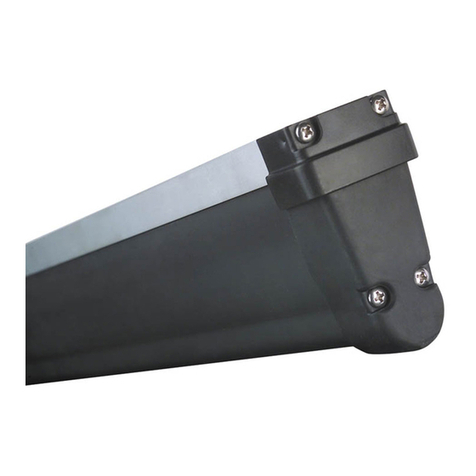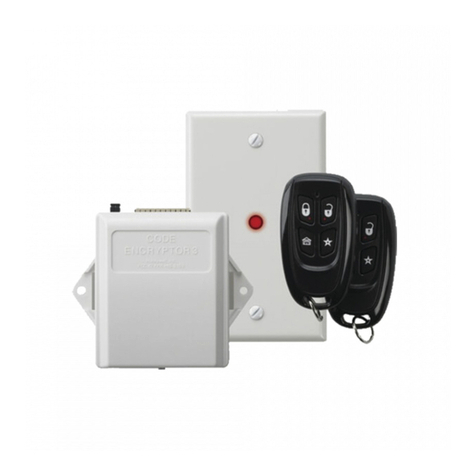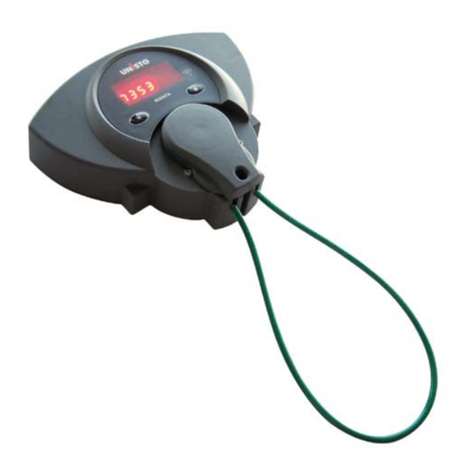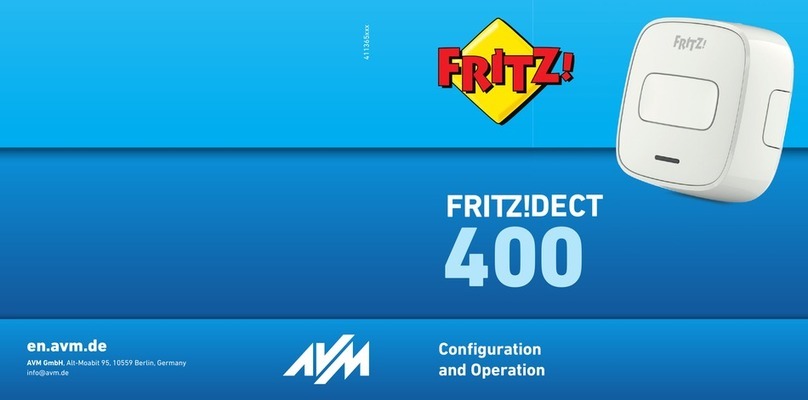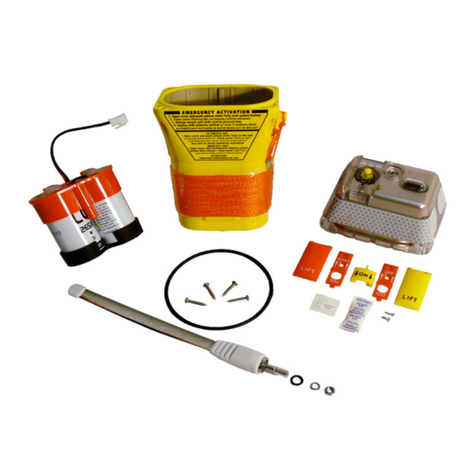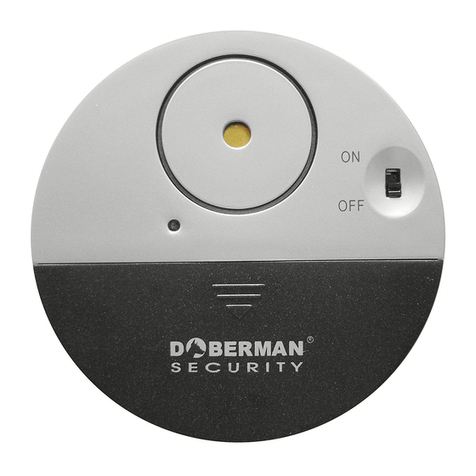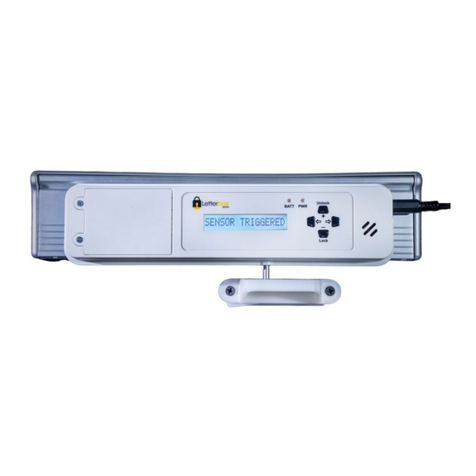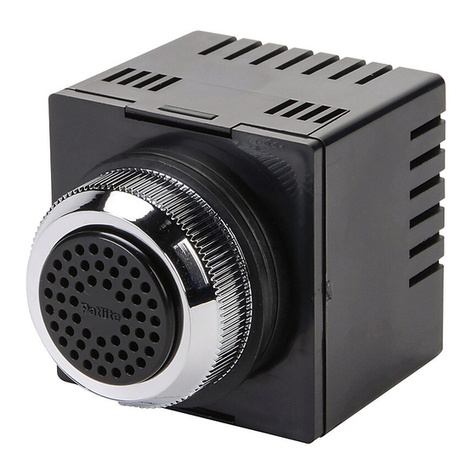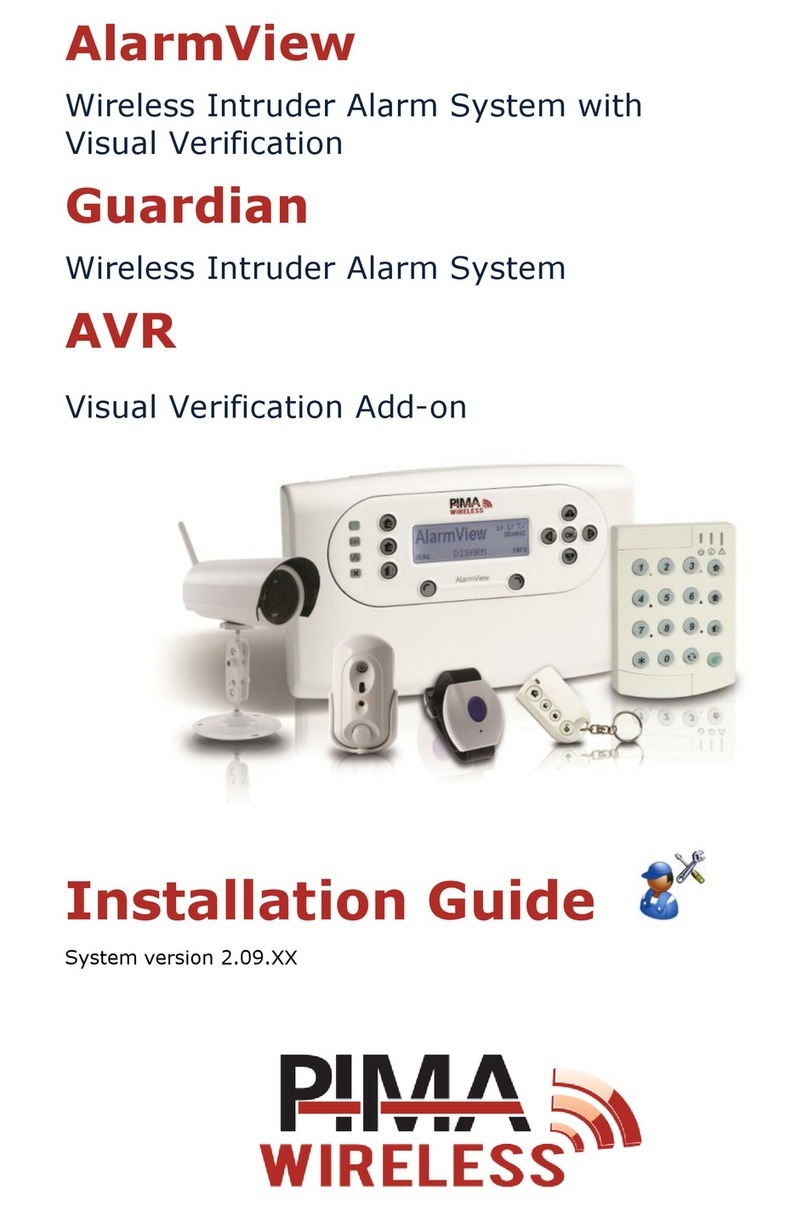MetaSystem DEFCOM 3.1B User manual

EN
User Manual
Manuel Utilisateur
FR

9
DEFCOM 3.1B User Manual
EN
CENTRAL UNIT STATUS LED DIRECTION
INDICATORS SIREN
Passive arming Slow ashing 1 Short ash 1 BEEP
Arming by remote control Slow ashing 2 Flashes 2 BEEP
Arming without internal tilt sensor Slow ashing Flashes 2 + 1 2 BEEP + 1 BEEP
Arming with active contact Slow ashing 2 Flashes 2 BEEP + 1 BOOP
Initial immunity phase Fast ashing
Testing during the initial
immunity phase Fast ashing 1 BEEP
Central unit armed Slow ashing
Alarm cycle Switches o Flashing Sounds
Disarming without alarms Switches o 1 Flash 1 BEEP
Disarming when the
motorcycle’s battery is at Switches o 4 BEEP
Disarming when alarms
have been memorised Switches o briey
every 6 sec. 1 BEEP + 1 BOOP
Pre-alarm phase Switches o 5 BEEP
Service Mode Flashing very fast
with ignition key ON
1. NOTIFICATIONS
If various alarms have been triggered, the memory will signal them in a sequence with 3 seconds pauses
and will repeat the sequence every 6 seconds. The memory is reset when the motorcycle is started up
or when the alarm system is armed with the remote control again. NOTE: Using the CARD B9.5 with
KeyLess mode, the alarms memory stay available for one minute also after instrument panel activation.
MEMORISED ALARMS LED SIGNALS
Internal movement sensor 1 Flash
Contacts 2 Flashes
Ignition key sensing 3 Flashes
Tampering with cables or battery 4 Flashes
The DEFCOM 3.1B alarm provides dierent signals (led, siren and ashing of the vehicle indicators)
according to the dierent commands received from remote control and dierent conditions which it
is, following are reported the main signals. Some acoustic signals from the siren during arming and
disarming the alarm (highlighted in bold) will be emitted only enabling the Buzzer Function, this is
possible changing the product factory set-up during installation (see the paragraph “12. MAIN PRO-
GRAMMABLE FUNCTIONS”).
BUTTON A
BUTTON B
Dear Customer,
the DEFCOM 3.1B alarm has a set-up that allows it to be installed on your vehicle quickly and in
compliance with current regulations, at 12th paragraph of this manual are indicated the possible
operating options and if you desire change the original set-up, you could request the customization
to your installer. The product has been designed for Keyless activation and deactivation pairing the
optional CARD B9.5 that you can require to your installer, the operations in Keyless mode are descri-
bed at 16th paragraph of this manual.
USER MANUAL

10 DEFCOM 3.1B User Manual
The central unit arms automatically in 50 seconds after executed one of following operations:
• After the motorcycle’s key has been turned OFF.
• After the remote control has been pressed to disarm the alarm system.
• After the alarm system has been disarmed using the ‘OVERRIDE’ CODE.
The passive arming is signaled by a short ash of the direction indicators and a slow ashing of
the LED, only the engine immobilizer is armed.
It is also possible to select the passive arming of all the alarm system (see the paragraph on
conguration). In this case, the signals given are the same as those of arming using the remote
control.
Press the A BUTTON of the remote control briey within 50 seconds of turning the motorcycle’s
ignition key OFF; the direction indicators ash twice. All the central unit’s functions have been
activated and the LED is ashing.
Press the A BUTTON of the remote control for approximately 2 seconds and within 50 seconds
of turning the motorcycle’s ignition key OFF; the direction indicators ash 2 + 1 times and the
siren emits 1 BEEP sounds.
All the central unit’s functions have been activated except the movement sensor. During the
immunity phase the LED ashing fastly and after ashes normally.
Press the A BUTTON of the remote control briey: the direction indicators ash once, the LED
switches o if no alarms have been triggered while the alarm system was active.
If the LED remains ON and the siren also emits a BOOP sound, this means that the alarm system
was triggered; To nd out how the alarm was triggered, consult the “MEMORISED ALARMS” ta-
ble in the chapter “1. NOTIFICATIONS”. If visual and acoustic signals are given during arming or
disarming that are dierent to those described above, consult the chapter “1.NOTIFICATIONS”
table to nd out what they mean.
For the rst 26 seconds after the alarm system has been armed with the remote control, the LED
ashing fastly to signal that it is possible to test the protection functions of the system.
Any alarm triggers do not provoke an alarm but just BEEP sounds by the siren together with
the resetting of the initial immunity phase which starts again. When this phase is over, the LED
ashes normally and any alarm triggers will provoke an alarm.
This is when the alarm system is armed and after the initial immunity phase is over. Any alarm
triggers will provoke an alarm cycle that lasts 26 seconds: the direction indicators ash, the
siren emits a distinctive modulated sound, the horn will sound continuously and it will be im-
possible to start the engine.
2. PASSIVE ARMING
3. ARMING BY REMOTE CONTROL
4. ARMING WITHOUT ACTIVATING
THE INTERNAL MOVEMENT SENSOR
5. DISARMING
6. INITIAL IMMUNITY PHASE
7. ACTIVE PHASE

11
DEFCOM 3.1B User Manual
The alarm central unit protects the motorcycle against being started and an alarm cycle will be
triggered every time:
• The ignition key is turned ON
• An attempt is made to remove or move any part of the motorcycle which is protected by
specic switches (for example if the seat or the storage compartment is opened...)
• The motorcycle is moved
• The alarm system’s supply cables are disconnected or cut or if the motorcycle’s battery is
disconnected.
8. PROTECTION BY THE ALARM SYSTEM
It is possible to trigger a 10 second alarm cycle by pressing the B BUTTON on the remote con-
trol. This alarm cycle can be interrupted by pressing the same button again.
9. PANIC
If needs excluding the alarm system for a time period, it’s possible enable the SERVICE MODE
modality using its remote control.
To enable the SERVICE MODE turn ON the motorcycle’s key and immediately after press hold
the A BUTTON of remote control at least 6 sec., the feature enabling is indicated by the LED
ashing very fast when the motorcycle’s key is ON.
To disable the SERVICE MODE turn ON the motorcycle’s key and immediately after press hold
the A BUTTON of remote control at least 6 sec., the feature disabling is indicated by the LED
goes OFF.
10. SERVICE MODE
This product has 2 dierent timed operation options to protect the vehicle battery (STOP
MODE and DEEP SLEEP MODE) and an additional system to fast shut o if the battery voltage
level goes down than 10,5V.
11. AUTOMATIC SYSTEMS TO PREVENT
VEHICLE BATTERY DISCHARGE
DEEP SLEEP MODE (LIMITING CURRENT CONSUMPTION WITH ALARM FUNCTIONS)
It is activated 5 days after the system was armed by remote control or automatically (passive
arming) if no alarms were triggered in this time.
The behavior of this operation option it’s very similar than the STOP MODE and the mainly
dierence it’s the vehicle protection that stay active during the DEEP SLEEP phase.
To exit from DEEP SLEEP MODE, turn the ignition key ON: the siren will emit a series of BEEP
sounds. Press the remote control within 20 seconds of the BEEPS to disarm the alarm system.
If the remote control is not pressed within 20 seconds, an alarm cycle will be triggered.
STOP MODE (LIMITING CURRENT CONSUMPTION WITHOUT ALARM FUNCTIONS)
The alarm system automatically switches o in order to limit the consumption of current in
the motorcycle’s battery, automatically excluding the alarm functions but maintaining the
immobilization of the engine: in this condition current consumption is nil. STOP MODE is
activated 5 days after the system was armed by remote control or automatically (passive
arming) if no alarms were triggered in this time or if the motorcycle’s battery is almost at
(battery voltage level under 10,5V).
To exit from STOP MODE, turn the ignition key ON: the siren will emit a series of BEEP soun-
ds. Press the remote control within 20 seconds of the BEEPS to disarm the alarm system. If the
remote control is not pressed within 20 seconds, an alarm cycle will be triggered.

12 DEFCOM 3.1B User Manual
It is possible to set some alarm functions to adapt the alarm system to the motorcycle and
its driver’s needs. All possible set-up are described in the table below where in bold are hi-
ghlighted the factory set-up.
12. MAIN PROGRAMMABLE FUNCTIONS
FUNCTION OPTION “A” OPTION“B”
Passive arming Enabled Disabled
Passive arming type Only immobilizer Immobilizer and
switches alarm
Immobilizer,
switches alarm
and tilt sensor
Horn alarm output Continuous Alternated
Buzzer Arm./Dis. Enabled Disabled
Direction indicators
Arm./Dis. Enabled Disabled
Alarm line
Yellow/Green wire Active if removed the
earth connection Active with
earth connection
Alarm line
Purple wire Active if removed
the earth connection Active with
earth connection Arm./Dis. switch
input using CARD
Remote control
buttons Button“A”:
Arming/Disarming Button“A”: Arming
Button“B”: Disarming
Panic alarm Enabled Disabled
Override Code length Only rst 3 digits 5 digits
Type of low
consumption mode Stop Mode Deep Sleep Mode
Activation timing of
low consumption
mode 5 days 10 days
Use only the PRG007 PROGRAMMER V3 to select the various functions of the product. Sof-
tware updates for the PRG007 PROGRAMMER V3 and information about the programmable
functions are available ONLINE in the TECH AREA/VEHICLES AREA of the www.metasystem.it
website.
To enable or disable the buzzer during the alarm Arming/Disarming execute the
following procedure:
• Enable the SERVICE MODE and after press 6 time the A BUTTON of remote con-
trol, one Beep will conrm the buzzer change.
• Then restore the normal operation of the alarm unit by deactivating the SER-
VICE MODE.

13
DEFCOM 3.1B User Manual
If a remote control is lost, stolen or damaged, it is possible to disarm the alarm system with a 5
digit emergency code called the ‘OVERRIDE’ CODE and this code is found on the label applied
on the alarm central unit body.
Remove the label from the alarm unit body and places it on the dedicate plate that you can
nd in the accessory bag, this plate must be kept in a safe place and not with the motorcycle.
The procedure is operational only after the initial immunity phase is over, and if the alarm fun-
ctions are operational, alarm cycles will be triggered while the override code is inserted.
Perform the following procedure.
With armed alarm system activate the instrument panel and immediately deactivate it; the LED
will turn ON, turn o and then start to ash after 2 seconds.
13. ‘OVERRIDE’ EMERGENCY CODE
DISARM
OK
x1 x3 x2 x1 x2
ALARM
IN ACTIVE
PHASE
(AFTER 26 SEC.)
“OVERRIDE”
EMERGENCY CODE
2 SEC.
3 QUICK
FLASHES
CONFIRM
3 QUICK
FLASHES
CONFIRM
3 QUICK
FLASHES
CONFIRM
( WITHIN 2 SEC. )
WITHIN 10 SEC. WITHIN 10 SEC. WITHIN 10 SEC. WITHIN 10 SEC.
WARNING: if the standard ‘OVERRIDE’ CODE length (5 digits) will be change in 3 digits the
alarm unit disarms after entering the third digit instead of the fth one.
If 3 attempts to insert the wrong code are detected, the central unit will be blocked for 10 mi-
nutes in order to prevent attempts to search for the code.
It is possible to customise the ‘OVERRIDE’ CODE so that it is easier to remember in case of
emergency. The ‘OVERRIDE’ CODE customising and the length reduction in 3 digits can be
performed by the installer only using the PRG007 V3 PROGRAMMER.
14. CUSTOMISING THE ‘OVERRIDE’ CODE

14 DEFCOM 3.1B User Manual
The alarm system is usually supplied with 2 remote controls.
To add or remove remote controls from the memory, gather all the remote controls together
that are to be included in the alarm system’s memory and proceed as follows:
1. Disarm the alarm system and turn the ignition key ON for 3 times within 3 sec and keep it
ON the last time (a BEEP sound conrms selection)
2. Turn the ignition key OFF within 10 sec and insert the ‘OVERRIDE’ CODE.
3. When the last digit is conrmed a series of BEEP–BEEP-BOOP-BOOP sounds conrms the
code was correct and LED start ashing very fast.
4. Within 60 seconds press simultaneously the 2 buttons on the rst radio remote control;
one BEEP sound and the LED turns OFF for 2 seconds to conrms pairing. Repeat the ope-
ration for all of the other radio remote controls to be paired, each time checking that they
have been stored successfully (any remote controls that are not paired during this phase
will be excluded).
5. To complete the pairing phase turn the ignition key ON or wait 60 seconds, a series of
BEEP–BEEP-BOOP-BOOP sounds conrms the end of the procedure and the LED turns OFF.
15. ADDITIONAL REMOTE CONTROLS
For this kind of functioning its necessary pair the CARD B9.5 optional, with them is possible
arming and disarming the alarm system without press the remote control buttons, and Mycro
remote controls stays operative; after paired the CARD using the PRG007 V3 PROGRAMMER
to activate the CARD B9.5 press it’s button 5 times.
Alarm system activation in the passive arming mode selected:
It occurs by moving the CARD B9.5 away from the vehicle with the instrument panel OFF,
after 15 sec. of missing signal from the CARD B9.5 the alarm system arms itself and will be
signaled as described in paragraph 1.
Alarm system disarming:
It occurs turning ON the instrument panel with CARD B9.5 close to vehicle, disarming will be
signaled as described in paragraph 1.
If the CARD B9.5 is still close to vehicle at the end of the initial immunity phase all the protec-
tions will be activate only after 15 seconds of missing signal from the CARD B9.5.
USE OF THE CARD B9.5 BUTTON
Alarm system arming: when the button is used to arm the system pressing the CARD B9.5
button all the protections will be included, the alarm system arming immediately and the
protections will be active after 26 second of immunity time if the CARD B9.5 will not be close
to vehicle. If the CARD B9.5 is still close to vehicle at the end of the initial immunity phase all
the protections will be activate only after 15 seconds of missing signal from the CARD B9.5.
Alarm system disarming: when the button is used to disarm
the system pressing the CARD B9.5 button the disarming will
be few seconds after pressing the button and the next passive
arming will be after 50 seconds instead of 15 seconds.
16. KEYLESS MODE BY CARD B9.5
MetaSystem Code:
ABS16900

15
DEFCOM 3.1B User Manual
Power supply .......................................................................................................12Vcc (10V-15V)
Consumption .........................................................................................................................1,0 mA
Consumption in DEEP SLEEP MODE ............................................................................. 0,3 mA
Consumption in STOP MODE .............................................................................................. 0 mA
Operating temperature ..........................................................................................- 25°C + 85°C
Sound level of siren ................................................................................................(1 mt.) 114 dB
Self-supply autonomy ...................................................................................................5 minutes
Remote controls ...................................72 million billion variable codes (lithium battery)
Sensitivity of internal movement sensor .....................................................1,5° per second
Frequency of Mycro remote control .....................................................................433.92 MHz
Frequency of CARD B9.5 .................................................................................................2.45 GHz
EMERGENCY ‘OVERRIDE’ CODE to reset immobilizer and alarm functions
17. SPECIFICATIONS
Starter motor relay ......................................................................................................................10A
Direction indicator relay ....................................................................................................5A + 5A
Horn control .....................................................................................Negative electronic 300mA
18. CAPACTITY OF CONTROLS
Initial immunity phase ...............................................................................................26 seconds
Duration of alarm cycle ...............................................................................................26 seconds
Interval between alarm cycles .....................................................................................5 seconds
Passive arming delay ...................................................................................................50 seconds
STOP MODE delay ...................................................................................................................5 days
Intermittence of direction indicators ................................................0,4 sec. O/0,4 sec. On
19. TIMING
Contact alarm inputs ........................................................................................................10 cycles
Tilt sensor .............................................................................................................................10 cycles
Ignition sensing .................................................................................................................10 cycles
Cable tampering ..................................................................................................................9 cycles
20. ALARM CYCLES

16 Manuel Utilisateur DEFCOM 3.1B
FR
STATUT DE LA CENTRALE LED CLIGNOTANTS SIRENE
Activation automatique Clignotement lent 1 Clignotement court 1 BEEP
Activation via la radiocommande Clignotement lent 2 Clignotements 2 BEEP
Activation avec exclusion du
capteur de mouvement Clignotement lent 2 Clignotements + 1 2 BEEP + 1 BEEP
Activation avec contact enclenché Clignotement lent 2 Clignotements 2 BEEP + 1 BOOP
Immunité initiale Clignotement rapide
Test pendant l’immunité initiale Clignotement rapide 1 BEEP
Centrale activée Clignotement lent
Cycle de l’alarme O Clignotants Son
Désactivation sans alarme O 1 Clignotement 1 BEEP
Désactivation avec batterie
moto déchargée O 4 BEEP
Désactivation avec mémoire
d’alarme Coupure toutes les 6 sec. 1 BEEP + 1 BOOP
Alerte O 5 BEEP
Mode Service Clignote rapidement avec
l’indication ON
1. SIGNALEMENTS
Si plusieurs alarmes ont été déclenchés, la mémoire les signales en séquences avec une pause de 3
sec et répète ces séquences toutes les 6 sec.. La mémoire est réinitialisée en démarrant la moto ou
en réinsérant à nouveau la radiocommande. Avertissement: En cas d’utilisation de l’option CARTE
B9.5 sans clef, la mémoire reste pendant une minute même après avoir activé le tableau de bord.
MÉMORIE D’ALARME LED
Capteur de mouvement 1 Lampeggio
Contacts 2 Lampeggi
Capteur de clé de démarrage 3 Lampeggi
Câble sectionné ou déconnexion de la batterie 4 Lampeggi
L’alarme DEFCOM 3.1B fournit diérents types de signalements (led, sirène et fonctionnement des
feux clignotants du véhicule) en fonction des diérentes commandes reçues et des diérents états
dans lesquels il se trouve, voir tableau ci-dessous. Les diérents sons de la sirène (mis en évidence
en gras) seront disponibles uniquement en activant la Fonction Buzzer lors de l’activation et de la
désactivation de l’alarme, cela est possible en modiant la conguration d’usine du produit lors de
l’installation (voir paragraphe“12. LES PRINCIPALES FONCTIONS PROGRAMMABLES”).
BOUTON A
BOUTON B
Cher(e) client(e),
L’alarme DEFCOM 3.1B a une conguration qui lui permet d’être installée sur votre véhicule d’une
manière rapide et conforme à la réglementation en vigueur. Au paragraphe 12 de ce manuel sont
indiquées les diérentes options alternatives. Si vous souhaitez modier la conguration d’origine, la
personnalisation peut être demandée à l’installateur. Le produit est conçu pour être activé et désac-
tivé sans clé en appairant l’option CARTE B9.5 que vous pouvez demander à votre installateur, le
fonctionnement sans clé est décrit au paragraphe 16 de ce manuel.
MANUEL UTILISATEUR

17
Manuel Utilisateur DEFCOM 3.1B
La centrale s’allume automatiquement dans un délai de 50 secondes après avoir eectué l’une
des opérations suivantes :
• Tourner la clé de la moto en position d’arrêt.
• Désactivation par la radiocommande.
• Désactivation via le CODE “OVERRIDE”.
L’activation automatique est signalé par un bref clignotement des feux de direction, la LED
clignote très lentement et seul le verrouillage de démarrage est actif. Vous pouvez également
sélectionner l’activation automatique pour les alarmes (voir paragraphe “12. LES PRINCIPALES
FONCTIONS PROGRAMMABLES”), et dans ce cas les signaux seront identiques à ceux insérés à
partir de la télécommande.
Appuyez brièvement sur le BOUTON A de la télécommande dans les 50 secondes. après avoir
tourné la clef en position OFF : les feux clignotants feront alors 2 clignotements. Toutes les fon-
ctions de la centrale seront actives et la LED clignotera.
Appuyez sur le BOUTON A de la télécommande pendant environ 2 secondes dans les 50 se-
condes après avoir tourné la clef en position OFF : Les feux clignotants feront alors 2+1 cligno-
tements et la sirène fera 1 BEEP. Toutes les fonctions de la centrale seront actives excepté le
capteur de mouvement. La LED clignote rapidement pendant la période d’immunité initiale,
puis clignote normalement.
Appuyez brièvement sur le BOUTON A de la télécommande: les feux clignotants eectueront 1
clignotement et la LED s’éteindra si aucune alarme ne s’est produite pendant que la centrale est
activé. Si la LED reste allumée et que la sirène émet aussi un BOOP, cela signie que des alarmes
se sont produites; pour en connaître l’origine, consultez le tableau“MEMOIRES D’ALARMES” (voir
paragraphe “1. SIGNALEMENTS”). Si pendant l’activation ou la désactivation, des indications lu-
mineuses et acoustiques se produisent et qu’elles sont diérentes de ce qui précède, consultez
le paragraphe “1. SIGNALEMENTS” pour en comprendre la signication.
Pendant les 26 premières secondes suivant l’activation de la centrale avec la radiocommande,
la LED clignote rapidement pour signaler qu’il est possible d’eectuer un test de protection de
l’alarme. De toute façon il est éventuellement possible de faire un test d’alarme qui ne génèrent
pas d’alarme sonore, mais uniquement des BEEP de la sirène et le temps d’immunité initial
repartira de zéro. Passé ce délai, la LED clignote lentement et la centrale, si elle est sollicité,
déclenchera une alarme.
La centrale est activé, une fois le temps d’immunité initial écoulé. Tout stimuli de l’alarme
génère un cycle d’alarme de 26 sec: les feux clignotants clignotent, la sirène émet un son spéci-
que, le klaxon sonne en continu et il est impossible de démarrer le moteur.
2. ACTIVATION AUTOMATIQUE
3. ACTIVATION VIA LA RADIOCOMMANDE
4. ACTIVATION AVEC EXCLUSION DU CAPTEUR DE MOUVEMENT
5. DÉSACTIVATION
6. IMMUNITÉ INITIALE
7. PHASE ACTIVE

18 Manuel Utilisateur DEFCOM 3.1B
La centrale d’alarme protège la moto contre le démarrage, un cycle d’alarme est généré chaque
fois que :
• La clé de contact de la moto est tournée en position ON.
• Si on essaye de retirer ou déplacer un élément de la moto protégé par des contacts spéci-
ques (par exemple ouverture de la selle, compartiment de rangement, ...).
• La moto est déplacé.
• Les câbles d’alimentation de la centrale d’alarme sont déconnectés/coupés ou s’ils sont
déconnectés de la batterie moto.
8. LES PROTECTIONS DE L’ALARME
Il est possible d’activer un cycle d’alarme d’une durée de 10 sec. en appuyant sur le BOUTON
Bde la radiocommande, ce cycle peut être interrompue en appuyant à nouveau sur la même
touche.
9. URGENCE
Si vous souhaitez désactiver complètement l’antivol pendant un certain temps, il est possi-
ble d’activer le MODE SERVICE à l’aide de la télécommande. Pour activer le MODE SERVICE,
tournez la clé de contact en position ON et appuyer immédiatement sur le BOUTON A de la
télécommande pendant au moins 6 secondes, l’activation sera indiquée par la LED qui clignote
rapidement lorsque la clé de contact est en position ON. Pour quitter la fonction MODE SER-
VICE, tournez la clé de contact en position ON puis appuyez immédiatement sur le BOUTON A
de la télécommande pendant au moins 6 secondes, la désactivation sera visible par l’extinction
de la LED.
10. MODE SERVICE
Ce produit a 2 modes de fonctionnement possibles conçus pour la protection de la batterie du
véhicule (MODE STOP et DEEP MODE VEILLE) et un système supplémentaire d’arrêt rapide en
cas de chute de la tension de la batterie en dessous de 10,5 V.
11. LES SYSTÈMES AUTOMATIQUES DE PROTECTION
DE LA BATTERIE DU VÉHICULE
DEEP MODE VEILLE
(LIMITATION DE LA CONSOMMATION DE COURANT AVEC PROTECTION ACTIVE)
Il s’enclenche 5 jours après l’activation par la radiocommande ou l’auto-activation, si aucune
alarme n’a été détecté pendant ce temps.
Le fonctionnement de ce mode est similaire au MODE STOP à la diérence que les protec-
tions du véhicule restent actives. Pour quitter l’état DEEP MODE VEILLE, tournez la clé de
contact en position ON: la sirène émet une série de BEEP et dans les 20 secondes. qui suivent
vous devez appuyer sur le bouton de la radiocommande pour désactiver le système. Si vous
n’appuyez pas dans les 20 sec. un cycle d’alarme pour tentative de démarrage se lance.
MODE STOP
(LIMITATION DE LA CONSOMMATION DE COURANT AVEC PROTECTION DÉSACTIVÉ)
La centrale s’éteint toute seule pour limiter la consommation de courant de la batterie de
la moto, elle exclue la partie alarme, mais assure toujours l’antidémarrage du bloc moteur:
dans ce cas la consommation est nul. L’activation du MODE STOP se produit au bout de
5 jours à compter de l’activation par la radiocommande ou de l’auto-activation, si aucune
alarme n’a été détecté pendant ce temps ou si la batterie de la moto est sur le point de
se décharger (batterie avec un niveau inférieur à 10,5 V). Pour quitter l’état MODE STOP,
tournez la clé de contact en position ON: la sirène émet une série de BEEP et dans les 20
secondes. qui suivent vous devez appuyer sur le bouton de la radiocommande pour désac-
tiver le système. Si vous n’appuyez pas dans les 20 sec. un cycle d’alarme pour tentative de
démarrage se lance.

19
Manuel Utilisateur DEFCOM 3.1B
Il est possible de régler certaines fonctions de l’alarme pour adapter le système à la moto et aux
besoins de son conducteur. Toutes les congurations possibles sont décrites dans le tableau
ci-dessous (en gras sont indiquées les congurations d’usine).
12. PRINCIPALES FONCTIONS PROGRAMMABLES
Utilisez uniquement le PROGRAMMATEUR PRG007 V3 pour sélectionner les diérentes
fonctions du produit. La mise à jour logiciel du PROGRAMMATEUR PRG007 V3 et les infor-
mations sur les fonctions programmables sont disponibles EN LIGNE dans le TECHNIQUE /
DOMAINE VÉHICULES du site www.metasystem.it.
FONCTION OPTION “A” OPTION“B”
Activation Activé Désactivé
Type d’activation Soulement a l’arrêt Bloc de démarrage
et alarme
Bloc de démarrage,
alarme et capteur de
déplacement
Sortie alarm klaxon Continue Alterné
Buzzer Arm./Dis. Activé Désactivé
Clignotants Arm./Dis. Activé Désactivé
Control de l’alarme
(Fil Jaune/Vert) Active si déconnecté
de la masse Active si connecté
à la masse
Control de l’alarme
(Fil Violet) Active si déconnecté
de la masse Active si connecté
à la masse Activation et désactiva-
tion avec la CARD
Boutons de la
télécommande Bouton“A”:
Activé/Désactivé
Bouton“A”: Activé
Bouton“B”: Désactivé
Alarme Panique Activé Désactivé
Longueur de code Seuls les 3 chires 5 chires
Type de mode de
consommation Stop Mode Deep Sleep Mode
Durée de mode
basse consommation 5 jours 10 jours
Pour activer ou désactiver le buzzer pendant l’armement / le désarmement de l’a-
larme, exécutez la procédure suivante:
• Mettre l’unité centrale en « MODE SERVICE », puis appuyer six fois sur le bou-
ton granulé de la télécommande, un « Bip » conrmera le changement d’état
(buzzer activé).
• Ensuite, rétablissez le fonctionnement normal de l’unité d’alarme en désacti-
vant le MODE SERVICE.

20 Manuel Utilisateur DEFCOM 3.1B
En cas de perte / vol de la télécommande, ou de dysfonctionnement de celle-ci, il est possible
de désactiver la centrale avec le code d’urgence à 5 chires appelé CODE “OVERRIDE” signalé
sur un adhésif sur la centrale d’alarme.
Retirez l’autocollant de la centrale et placez-le sur la plaque fournie en accessoires, celle-ci doit
être conservée dans un endroit sûr et non à l’intérieur de la moto.
Cette procédure n’est possible qu’après le temps d’immunité initial, et si la centrale dispose de
l’alarme activés, des cycles d’alarme seront générés lors de la saisie du code.
Eectuez la procédure suivante.
Avec le système antivol activé, allumez le tableau de bord et désactivez-le immédiatement
après; la LED s’allumera, s’éteindra, puis commencera à clignoter après 2 secondes.
13. CODE D’URGENCE“OVERRIDE”
DÉSACTIVÉ
OK
x1 x3 x2 x1 x2
ALARME
ACTIVE
(APRÈS 26 SEC.)
CODE D'URGENCE
“OVERRIDE”
2 SEC.
CONFIRME
PAR 3 FLASH
RAPIDES
CONFIRME
PAR 3 FLASH
RAPIDES
CONFIRME
PAR 3 FLASH
RAPIDES
( DANS LES 2 SEC. )
DANS LES 10 SEC. DANS LES 10 SEC. DANS LES 10 SEC. DANS LES 10 SEC.
ATTENTION : Si la longueur standard du CODE“OVERRIDE” (5 chires) est modiée en 3 chif-
fres, la centrale d’alarme se désarme après avoir entré le troisième chire au lieu du cinquième.
Si 3 tentatives d’insertion du mauvais code sont détectées, la centrale sera bloquée pendant 10
minutes an d’empêcher les tentatives de recherche du code.
Vous pouvez personnaliser le CODE “OVERRIDE” pour vous en souvenir plus facilement en cas
d’urgence. Le changement du code et la possibilité de réduire le code à 3 chires sont program-
mables par l’installateur exclusivement via le PROGRAMMATEUR PRG007 V3.
14. PERSONNALISATION DU CODE“OVERRIDE”

21
Manuel Utilisateur DEFCOM 3.1B
La centrale est normalement appairée à 2 radiocommandes.
Pour ajouter ou exclure d’autres radiocommandes de la mémoire de la centrale, vous devez être
en possession de toutes les télécommandes et suivre les indications suivantes :
1. Débranchez la centrale et dans les 3 secondes, tournez la clé de contact 3 fois en position
ON et maintenez-la en position la troisième fois (un BEEP conrmera la sélection réussie).
2. Tournez la clé de contact sur OFF dans les 10 secondes. et entrez le CODE“OVERRIDE”.
3. Lors de la conrmation du dernier chire, une série de BEEP-BEEP-BOOP-BOOP signalera
l’insertion correcte et la LED commencera à clignoter rapidement.
4. Dans les 60 secondes, appuyez simultanément sur les 2 touches de la première radiocom-
mande, un BEEP et la LED éteinte pendant 2 secondes conrment l’appairage; répétez
l’opération pour toutes les radiocommandes que vous souhaitez combiner avec la centrale
(celles qui ne sont pas activées au cours de cette opération seront exclus).
5. Pour terminer l’appairage, tournez la clé de contact en position ON ou attendez 60 secon-
des après le dernier appairage, une série de BEEP-BEEP-BOOP-BOOP conrmera la n de la
procédure et la LED s’éteindra.
15. RADIOCOMMANDES SUPPLEMENTAIRES
Pour ce mode il est nécessaire d’appairer l’option CARTE B9.5, cela permettra d’activer et
désactiver l’antivol automatiquement sans appuyer sur les touches, les radiocommandes Mycro
fournies restent parfaitement opérationnelles; une fois appairée avec l’antivol à l’aide du pro-
grammateur PRG007 V3, la CARTE B9.5 doit être activée en appuyant sur 5 fois sur le bouton.
Activation de l’antivol avec le mode d’activation automatique sélectionné :
Après éloignement de la CARTE B9.5 du véhicule, tableau de bord éteint, après environ 15
sec. d’absence de la CARTE B9.5 l’antivol est activé et signalé comme décrit au paragraphe1.
Désactivation de l’antivol :
Après éclairage du tableau de bord du véhicule en présence de la CARTE B9.5 la désactivation
sera signalée comme décrit au paragraphe1.
Dans le cas ou la CARTE B9.5 est encore présente à la n de la période d’immunité, les protec-
tions deviendrons actives après environ 15sec. d’absence de la CARTE B9.5.
UTILISATION DU BOUTON DE LA CARTE B9.5
Activation de l’antivol : quand il est utilisé pour forcer l’activation de l’antivol et de ces
protections en appuyant sur la CARTE B9.5, l’antivol fonctionne immédiatement et les pro-
tections sont toutes actives si après une temporisation de 26 sec. la CARTE B9.5 n’est plus
présente à proximité du véhicule.
Si la CARTE B9.5 est encore présente après la temporisation,
les protections deviendrons toutes actives après environ 15 sec.
d’absence de la CARTE B9.5.
Désactivation de l’antivol : quand on veut forcer la désacti-
vation de l’antivol, elle est eective quelques secondes après la
pression du bouton et l’activation automatique au lieu après 50
secondes au lieu de 15.
16. FONCTIONNEMENT EN MODE SANS CLÉ AVEC LA CARTE B9.5
Code MetaSystem:
ABS16900

22 Manuel Utilisateur DEFCOM 3.1B
Tension d’alimentation .....................................................................................12Vcc (10V-15V)
Consommation .......................................................................................................................1,0 mA
Consommation en DEEP MODE VEILLE .......................................................................... 0,3 mA
Consommation en MODE STOP .......................................................................................... 0 mA
Température d’utilisation .......................................................................................- 25°C + 85°C
Puissance de la sirène .............................................................................................(1 mt.) 114 dB
Autonomie sans alimentation .....................................................................................5 minutes
Télécommande .....72 millions de milliard de combinaisons possibles (batterie Lithium)
Sensibilité du capteur de mouvement ..........................................................1,5° par second
Fréquence des radiocommandes Mycro .............................................................433.92 MHz
Fréquence de la CARTE B9.5 ...........................................................................................2.45 GHz
CODE “OVERRIDE” pour réinitialiser les fonctions d’immobilisation et d’alarme.
17. SPECIFICATIONS
Relais moteur du démarreur ..................................................................................................10A
Feux clignotants ...................................................................................................................5A + 5A
Relais commande Klaxon .........................................................Négatif électronique 300mA
18. PORTÉE DES COMMANDES
Temps de l’immunité initiale ...................................................................................26 secondes
Durée des cycles d’alarmes ......................................................................................26 secondes
Intervalle entre les cycles d’alarmes ........................................................................5 secondes
Délai d’activation automatique .............................................................................50 secondes
Délai du MODE STOP .....................................................................................................5 journées
Alarme par les clignotants .....................................................0,4 sec. éteint/0,4 sec. allumé
19. TEMPORISATION
Les entrées des contacts d’alarme ...............................................................................10 cycles
Capteur de mouvement ..................................................................................................10 cycles
Capteur de clé de contact ..............................................................................................10 cycles
Câble sectionné ...................................................................................................................9 cycles
20. LES CYCLES DES ALARMES

23
Manuel Utilisateur DEFCOM 3.1B

5040364500 04/2020 © Copyright Meta System S.p.A. - All rights reserved.
Hereby, Meta System S.p.A. declares that MotorBike Alarm types DEFCOM 3.1B/3.2B,
ID-TAG type B9.5 and Remote control type Mykro are in compliance with Radio
Equipment Directive 2014/53/EU.
Frequency Bands in which the radio equipment operates:
433.05 MHz – 434.79 MHz <10mW e.i.r.p.
2402.0 MHz – 2480.0 MHz <10mW e.i.r.p.
Certificate Holder’s Address:
Meta System S.p.A. - Via Galimberti 5, 42124 Reggio Emilia (Italy)
The full text of the EU Declaration of Conformity is available at the following internet
address: https://docs.metasystem.it/
SIMPLIFIED EU DECLARATION OF CONFORMITY
Other manuals for DEFCOM 3.1B
1
Table of contents
Languages:
Other MetaSystem Security System manuals
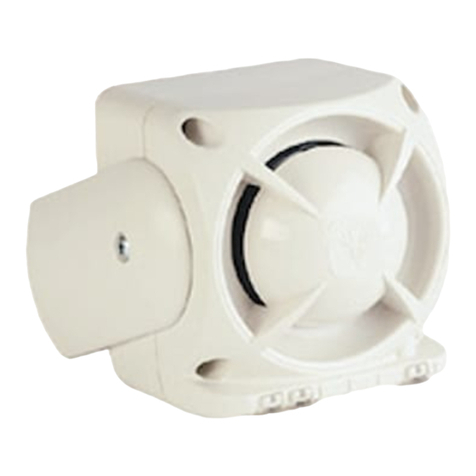
MetaSystem
MetaSystem C11 User manual

MetaSystem
MetaSystem Def Com 3 User manual
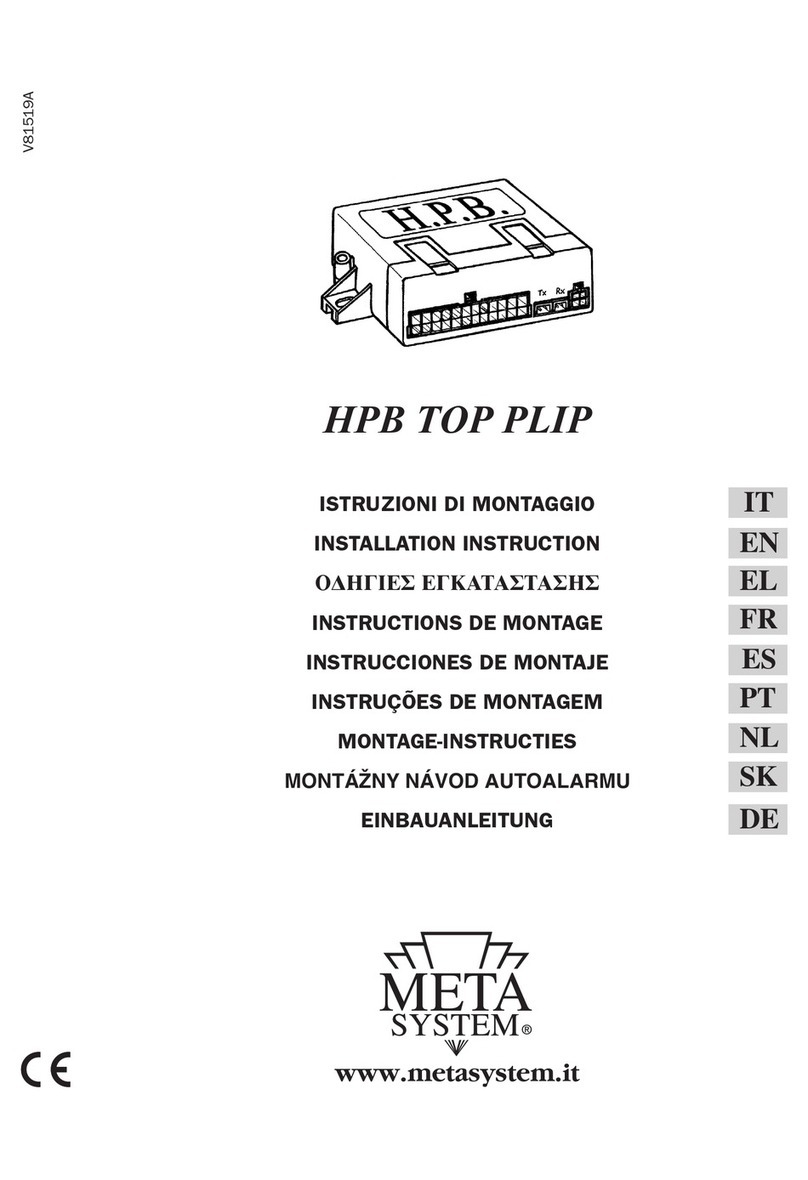
MetaSystem
MetaSystem HPB TOP PLIP User manual
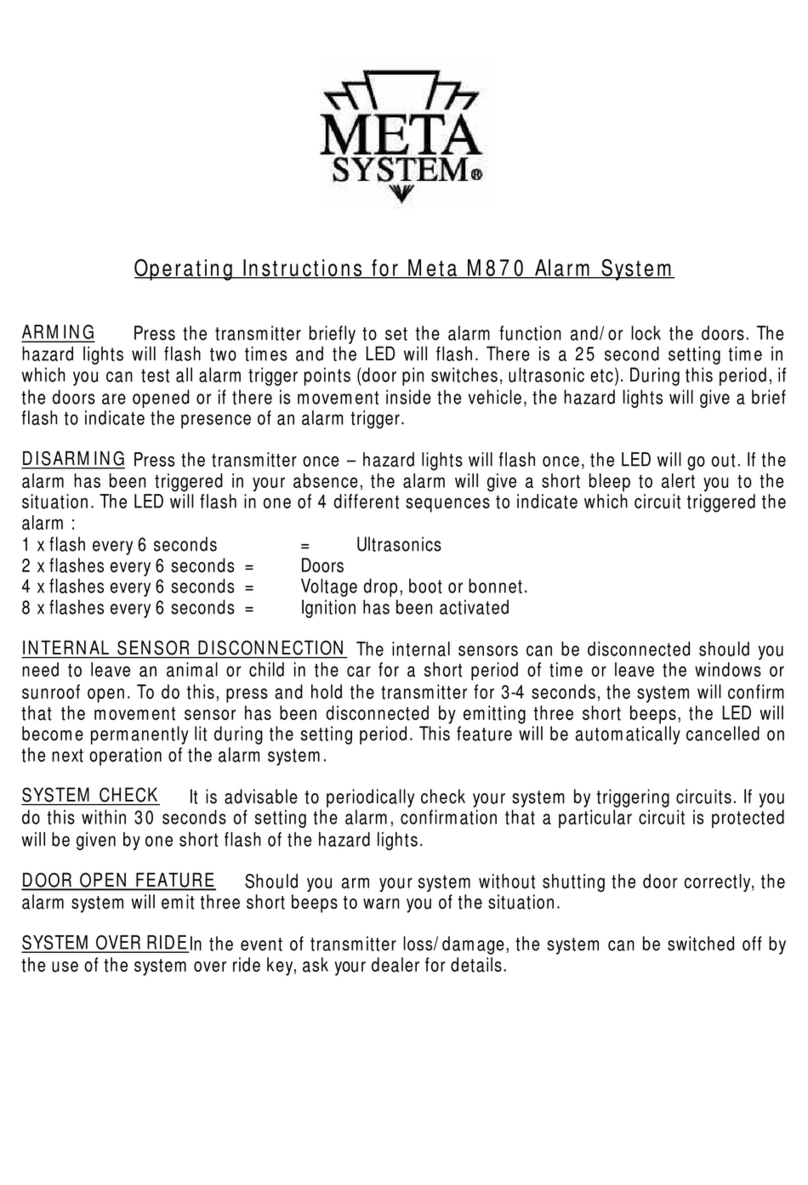
MetaSystem
MetaSystem M870 User manual
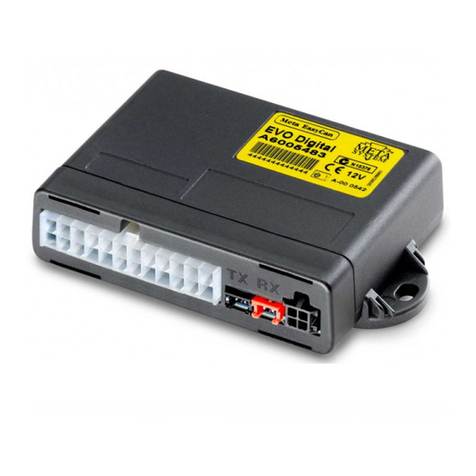
MetaSystem
MetaSystem EasyCan Instruction Manual
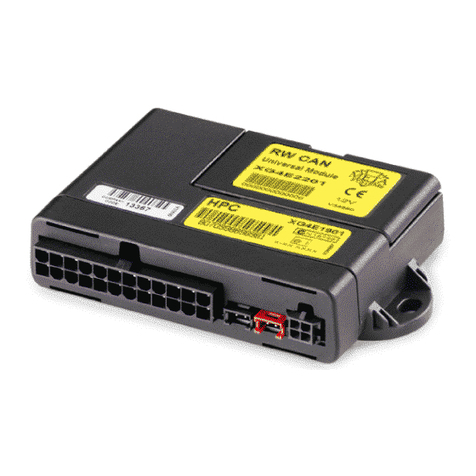
MetaSystem
MetaSystem EasyCan Digital User manual
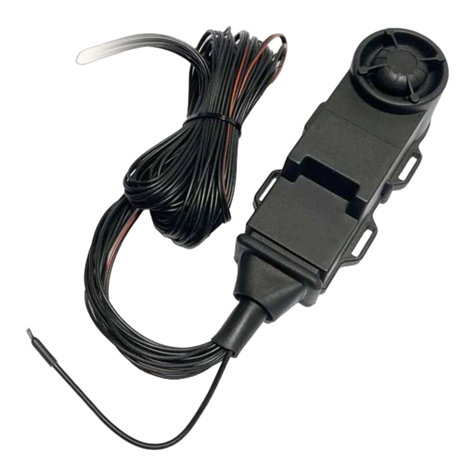
MetaSystem
MetaSystem M357 TV3 User manual
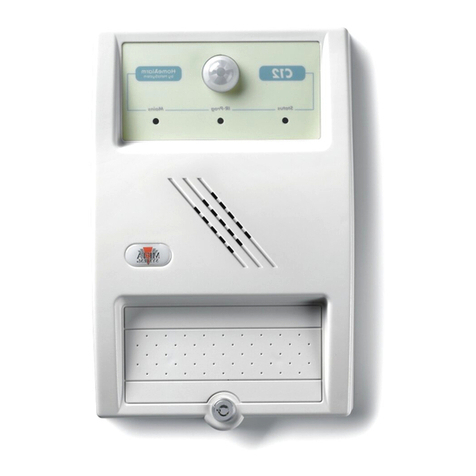
MetaSystem
MetaSystem C12 User manual
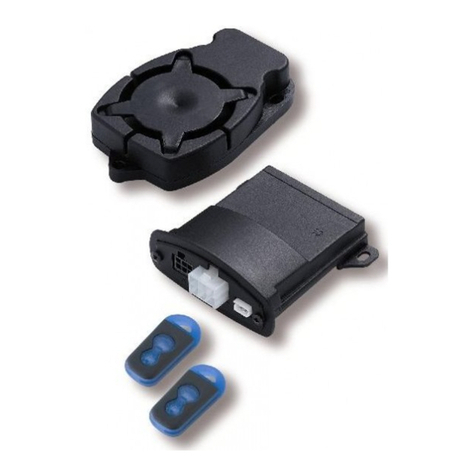
MetaSystem
MetaSystem LEGOS1 User manual
